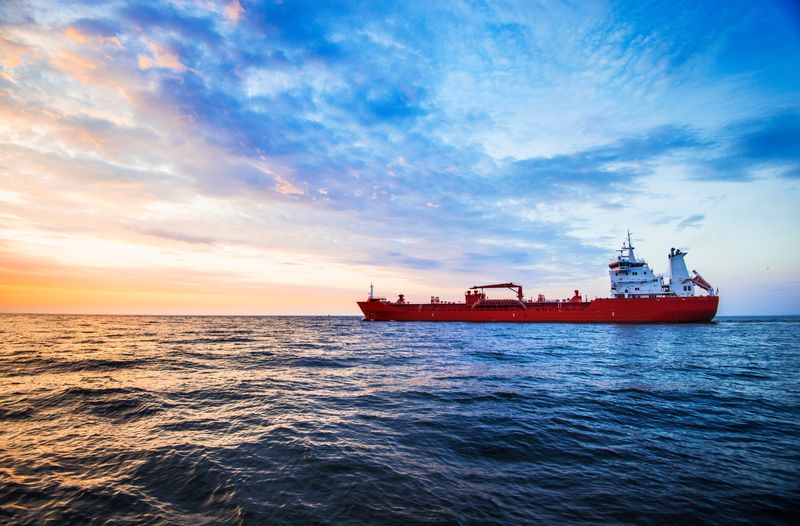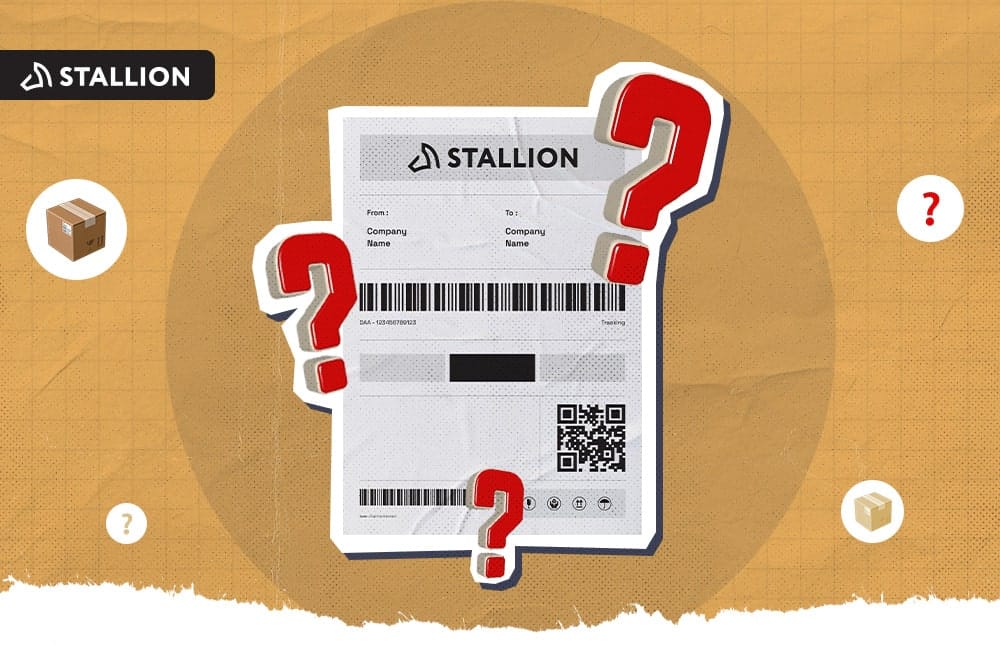
Regardless of small or big brands, bulk shipping can be a breath of fresh air to businesses. From affordable, complete shipping solutions to package quantity and security, bulk shipping solutions have strong points to offer a business.
Sea shipping is the most preferred method for transporting goods. If you ask, “what is the best way to ship internationally?” then this one answers your question. The International Maritime Organization (IMO) conducted a report that says 90% of the global cargo is processed through sea transportation, which means it is cost-effective for international trade.
Let’s look at the most common types of vessels used for bulk shipments and what characteristics make these carriers a good choice for your shipping solutions.
Shipping vessels are classified according to the kind and amount of cargo they carry. Below are the most popular types of vessels utilized for bulk shipping.
True to its name, container vessels are designed to carry containers with large quantities of cargo in them. Containers became a standard because they are handy when it comes to transporting different cargo.
Container ships have cell guides engineered on them to make spaces for the containers. When it comes to loading and discharging goods, these ships have specialized cranes to do the lifting.
Containers are measured in Twenty-foot Equivalent Units (TEU.) These ships travel with great speed (approximately 21 knots) and carry 3,000 to over 18,000 TEU’s. The carrying capacity depends on its subcategories: the Feeder, Intermediate, Neo-Panamax, and Post-Panamax.
Bulk vessels are the fitting ships to carry primarily large amounts of dry cargoes. These goods are usually coal, iron ore, grain, cement, sugar, fertilizer, and more. Bulk vessels divide through the cargo holds that are covered in hatches.
Bulk carriers have specific ports which contain the necessary tools for loading and unloading the cargo. Instead of specialized cranes, bulk carriers rely on a conveyor. These ships travel with speed lower than containers (approximately 13 knots) but with a carrying capacity of up to 200,000 DWT.
When it comes to food controlled by temperature, reefer vessels are suitable ships. Fish, fruits, meat, alcohol, and any other refrigerated goods are carried here. Like bulk carriers, these vessels store the packages in holds but are sealed and with controlled temperature.
Tanker vessels are also known as liquid cargo ships. As its name implies, it is the vessel that carries various types of liquid and gas cargo. It includes wine, fuel oil, edible oils, diesel/gas oil, and more. If you’re planning to ship crude oil, there is a specific vessel for that, which is called a crude carrier.
Instead of holds, tankers are divided into tanks and a pipeline system that pumps the liquid cargo in them. Some tankers install an inert gas system to prevent the risk of fire.
The types of vessels also differ in size. Below is a list of the most common vessel sizes used for bulk shipping.
Handysize are medium-sized bulk carriers. They are around 130 to 150 meters long with a shallow 10-meter draft. Their carrying capacity ranges from 15,000 up to 35,000 DWT. The Handy is an ideal vessel to carry various bulk cargo to a massive number of ports.
The structure of a Handysize is typically five holds with different storage types and on-deck cranes. The types of cargo a Handy can carry are coal, iron ore, sugar, gypsum, cereal, cement, wood logs, grains, fertilizer, phosphate, sulphur, finished steel products, salt, vehicles, and more.
Another size from the Handy series is the Handymax which carries cargo for about 35,000 to 59,000 DWT. They come with a length of 150 to 120 meters and a draft around 11 to 12 meters. Similar to the Handysize, these vessels are also structured with five cargo holds and four on-deck cranes.
Handymax vessels are perfect for unloading cargo in smaller ports with size restrictions and lacking infrastructure. They are used primarily for dry bulk cargo, such as coal, steel, wood, potash, forest products, fertilizer, scrap, cement, and other related materials.
The Panamax vessels are designed to fit the dimensions of the Panama Canal locks. These vessels are around 200 to 230 meters long and a draft between 13 to 15. They are structured with six to seven holds to fit the locks and a carrying capacity between 60,000 to 80,000 DWT.
Panamax usually transports cargo in Latin America and the Caribbean. They typically carry coal, oilseeds, iron ore, wood chips and pellets, sulphur, bauxite, and grains.
As for the size regulations set by the Panama Canal Authority, the latest measurements are currently 366 meters long, 49 meters wide, and 15.2 meters deep.
Capsizes is the largest size of a bulk shipping vessel. These are 230 to 270 meters long, a 17-meter draft, and a carrying capacity between 80,000 to 110,000 DWT. They contain nine cargo holds, which means it’s not flexible to various ports in the world. The cargoes they carry are oil seeds, coal, iron ore, and grains. These vessels trade around the Cape of Good Hope because only large harbours can accommodate them.
Supramax are pretty flexible medium-sized vessels, making them one of the most popular for dry bulk shipping in various ports and terminals. They have a length of 199 meters and a 12.2 meters draft. They contain five holds and a carrying capacity of about 48,000 up to 60,000 DWT.
An important thing to note is that bulk shipping is beneficial to certain businesses only. Suppose you’re a business in the industrial or agricultural field seeking affordable shipping costs for eCommerce. In that case, bulk shipping can work well with you.
If you’re interested in small business shipping Canada services for a reasonable price, book an appointment with Stallion Express today, and we’ll help you get started.
Aman looks after the content marketing department at Stallion Express. He is passionate about helping businesses grow by providing informative and up-to-date trends in the eCommerce industry. Outside the office, you can find him on the soccer field cheering on Real Madrid.



Can our fellow Torontonians relate?
-
#smallbusiness #business #entrepreneur #socialmedia #shipping #ecommerce #canadianecommerce #shopify #poshmark #b2b #saas #etsy #ebay #canada #canadiansmallbusiness #shoplocalcanada #entrepreneur
#toronto

Here’s your quick hassle free shipping from 🇨🇦 to 🇺🇸 as a business owner!
-
Any questions?! Leave them 👇🏻 and save this video so you don’t forget!
-
#smallbusiness #business #entrepreneur #socialmedia #shipping #ecommerce #canadianecommerce #shopify #poshmark #b2b #saas #etsy #ebay #canada #canadiansmallbusiness #shoplocalcanada #entrepreneur

Meet @drinkbenny a 🇨🇦 female founded energy drink brand! Instead of focusing on their products, they’re taking a unique approach by hosting in person events in different Canadian cities to offer an experience for their community 🧡
-
What are your thoughts on in person events? 💭
-
#smallbusiness #business #entrepreneur #socialmedia #shipping #ecommerce #canadianecommerce #shopify #poshmark #b2b #saas #etsy #ebay #canada #canadiansmallbusiness #shoplocalcanada #entrepreneur

Do you know the difference between DDU and DDP when shipping internationally 🌏 ?
-
Questions? Leave them below! 👇🏻
-
#smallbusiness #business #entrepreneur #socialmedia #shipping #ecommerce #canadianecommerce #shopify #poshmark #b2b #saas #etsy #ebay #canada #canadiansmallbusiness #shoplocalcanada #entrepreneur

Here’s a quick hack to save time from choosing multiple postage options
↪️ Turn on the lowest postage rate automation to save you time!
-
Questions? Leave them below! 👇🏻
-
#smallbusiness #business #entrepreneur #socialmedia #shipping #ecommerce #canadianecommerce #shopify #poshmark #b2b #saas #etsy #ebay #canada #canadiansmallbusiness #shoplocalcanada #entrepreneur
